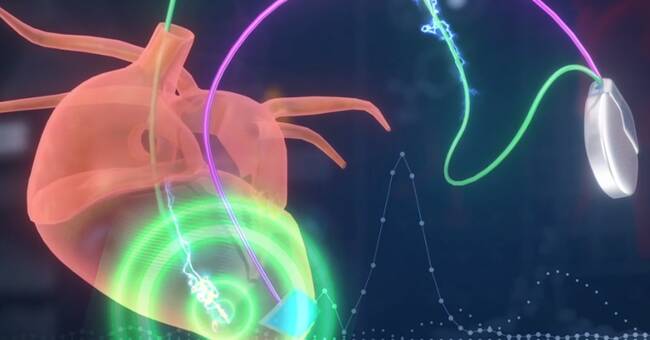There is a manikin that harvests energy from your steps towards the ground, converts it into electricity with which you can then charge your mobile phone.
It can also replace a battery in a pacemaker, then it extracts energy from the heart's own beats.
A research group has even managed to extract energy from snow that falls to the ground.
Extracts energy from falling snow
It sounds like an eternity machine - but it's not.
It's a nanogenerator.
It can convert energy that comes from everyday movements and converts it into electricity.
So now we can use energy around us that we previously did not know how we could use.
Leading the development of nanogenerators is 59-year-old Zhong Lin Wang, who is active in both China and the United States.
In his first nanogenerator, he used the so-called piezoelectric effect.
It is a property that some crystals have.
When exposed to pressure, the mechanical energy is converted into electricity.
Exploding area
In 2012, he developed a new type of nanogenerator, the triboelectric nanogenerator, TENG, which can also convert static electricity into ordinary electricity.
Zhong Lin Wang is the 14th most quoted researcher in the world right now, which is a sign that very many research groups are inspired by and develop his inventions.
It is a research area that is literally exploding.
And soon his work of providing the world with a new energy source should be rewarded with a Nobel Prize in physics - perhaps already this year?
Photons with mysterious properties
But maybe it's a little too early for the quantum generator to get a price.
Some who have waited long enough are three gentlemen who have proven that photons really have a mysterious property: quantum mechanical interconnection.
Or as Albert Einstein called it, spooky distance effect.
Photo pairs created from the same source are in immediate contact with each other - if they are on opposite ends of the universe.
Or, so far it has been possible to show that the photons can handle that feat at a distance of 120 miles.
Teleportation
As early as 1972, the American John Clauser (77 years old) showed with a so-called Bell test that photons have an ability for telepathic contact with each other.
The Frenchman Alain Aspect (73 years) further developed the test.
The Austrian Anton Zeilinger (75 years old) took it all a step further and showed how to transfer information between two linked photons, popularly called teleportation.
It sounds like science fiction but is actually true, and in the future it could be used for foolproof quantum encryption.
We will find out who will be awarded the Nobel Prize this year at 11:45 at the earliest today. SVT broadcasts live starting at 11:40.

